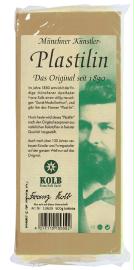
The 1880s was a decade of the Gregorian calendar that began on January 1, 1880, and ended on December 31, 1889.

An invention is a unique or novel device, method, composition or process. The invention process is a process within an overall engineering and product development process. It may be an improvement upon a machine or product or a new process for creating an object or a result. An invention that achieves a completely unique function or result may be a radical breakthrough. Such works are novel and not obvious to others skilled in the same field. An inventor may be taking a big step toward success or failure.

Ernst Werner Siemens was a German electrical engineer, inventor and industrialist. Siemens's name has been adopted as the SI unit of electrical conductance, the siemens. He founded the electrical and telecommunications conglomerate Siemens.

A concertina is a free-reed musical instrument, like the various accordions and the harmonica. It consists of expanding and contracting bellows, with buttons usually on both ends, unlike accordion buttons, which are on the front.

Emile Berliner, originally Emil Berliner, was a German-American inventor. He is best known for inventing the lateral-cut flat disc record used with a gramophone. He founded the United States Gramophone Company in 1894; The Gramophone Company in London, England, in 1897; Deutsche Grammophon in Hanover, Germany, in 1898; Berliner Gram-o-phone Company of Canada in Montreal in 1899 ; and Victor Talking Machine Company in 1901 with Eldridge Johnson.

Patent leather is a type of coated leather that has a high-gloss finish. The coating process was introduced to the United States and improved by inventor Seth Boyden, of Newark, New Jersey, in 1818, with commercial manufacture beginning September 20, 1819. Boyden's process used a lacquer coating that was based on linseed oil. Modern patent leather usually has a plastic coating.
The year 1829 in science and technology involved some significant events, listed below.
The year 1791 in science and technology involved some significant events.

Plasticine is a putty-like modelling material made from calcium salts, petroleum jelly and aliphatic acids.

Joseph Ludwig Franz Ressel was a forester and inventor of Czech-German descent, who designed one of the first working ship's propellers.
William Harbutt was a British artist and the inventor of Plasticine.
Bath School of Art and Design is an art college in Bath, England, now known separately as Bath School of Art and Bath School of Design. It forms part of the Bath Spa University whose main campus is located a few miles from the City at Newton Park, between Newton St Loe and Corston, in North Somerset, just outside the city of Bath. Bath School of Art is based at the new, award-winning Locksbrook Campus, on the river Avon, in the west of the city. Bath School of Design is spread across Locksbrook and Sion Hill Campuses. The present Heads of School are Dan Allen and Kerry Curtis.

Modelling clay is any of a group of malleable substances used in building and sculpting. The material compositions and production processes vary considerably.
William Harbutt Dawson was a British journalist, civil servant and author, and an acknowledged expert on German politics and society.

Photo Production Ltd v Securicor Transport Ltd[1980] UKHL 2 is an English contract law case decided by the House of Lords on construction of a contract and the doctrine of fundamental breach.
The decade of the 1880s in film involved some significant events.
John E. Franz is an organic chemist who discovered the herbicide glyphosate while working at Monsanto Company in 1970. The chemical became the active ingredient in Roundup, a broad-spectrum, post-emergence herbicide. Franz has earned much acclaim and many rewards for this breakthrough. He also has over 840 patents to his name worldwide.
Joseph Beverley Fenby (1841–1903) was an English mechanical engineer and inventor who designed a device that would record a sequence of keyboard strokes onto paper tape. Although no model or workable device was ever made, it is often seen as a link to the concept of punched paper for player piano rolls (1880s).
Harbutt's "Plasticine" Ltd v Wayne Tank and Pump Co Ltd [1970] is an English contract law case involving the quantum of damages and the concept of fundamental breach. It was heard in the Court of Appeal by Lord Denning MR, Widgery LJ and Cross LJ.










